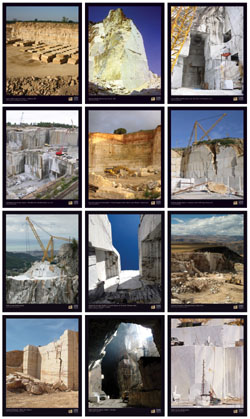Cersaie 2011 honors Japanese Architecture
BOLOGNA, ITALY -- In the year
of the devastating earthquake and tsunami in Japan, the country's architecture
will be given ample coverage at Cersaie 2011, the International Ceramic tile
and Bathroom Furnishing Exhibition. In particular, two of its most renowned
architects, Kengo Kuma and Kazuyo Sejima, have been invited to speak at the
29th edition of the show, which will be held in Bologna, Italy,
from September 20 to 24.
"Power
of the place" is the title of the talk that will be given by Kengo Kuma, founder
of the prestigious Tokyo-based practice Kengo Kuma & Associates, on
Wednesday, September 21at 2 p.m. Kuma
has produced numerous high-profile and innovative works of architecture in
Japan and worldwide, most notably the Water/Glass House in Shizuoka, the Toyoma
Center for Performance Arts in Miyagi, the Stone Museum in Tochigi and the Nezu
Museum in Tokyo. He is currently involved in a number of major projects in China and Europe, including the Arts Centre in Besançon, France
and the Performing Arts Centre in Granada,
Spain.
A recurrent
theme of Kengo Kuma's work is that of the void, which he uses as a key
component of architecture on a par with other building materials. "The
void has the same importance in architecture that silence has in music,"
Kuma stated in a keynote lecture given at the World Congress of Architecture in
Turin in 2008. "Many
of my colleagues believe that a museum should be the reason for visiting a
place, they see museums as ends in themselves. For me, they are the means to an
end -- architecture must be a window that opens onto something else, and it
must do this with respect for the natural world."
Kazuyo
Sejima, who will give a keynote lecture on Friday, September 23 at 11 a.m., opened
her own architecture practice in 1987. In 1995, together with Ryue Nishizawa,
she founded Sanaa, the Tokyo-based practice that has produced some of the world's
most innovative works of architecture in recent years, such as the New Museum
of Contemporary Art in New York, the Serpentine Pavilion in London, the
Christian Dior Building in Omotesando, Tokyo and the 21st Century Museum of
Contemporary Art in Kanazawa, which in 2004 won her the Golden Lion at the 9th
Venice Biennale International Architecture Exhibition. It was Toyo Ito, her teacher
and first employer, who described her as "an architect who connects the
material and the abstract with the utmost simplicity." Renowned for her
ability to utilize gender differences in architecture, she was the first woman
to curate the International Architecture Exhibition at the Biennale in 2010
following her success in 2000 with the "City of Girls" exhibition in the Japanese
pavilion. Winner of last year's prestigious Pritzker Architecture Prize, Kazuyo
Sejima has recently been working on other high-profile projects in Europe,
including the Rolex Learning Center
at the Ecole Polytechnique Fédérale in Lausanne,
Switzerland, which opened in
March 2010, and the new branch of the Louvre
Museum in Lens, France,
currently under construction.
Looking for a reprint of this article?
From high-res PDFs to custom plaques, order your copy today!






